- Home
- About Us
- Products
-
Heat-Pump Dehumidifier DeAir
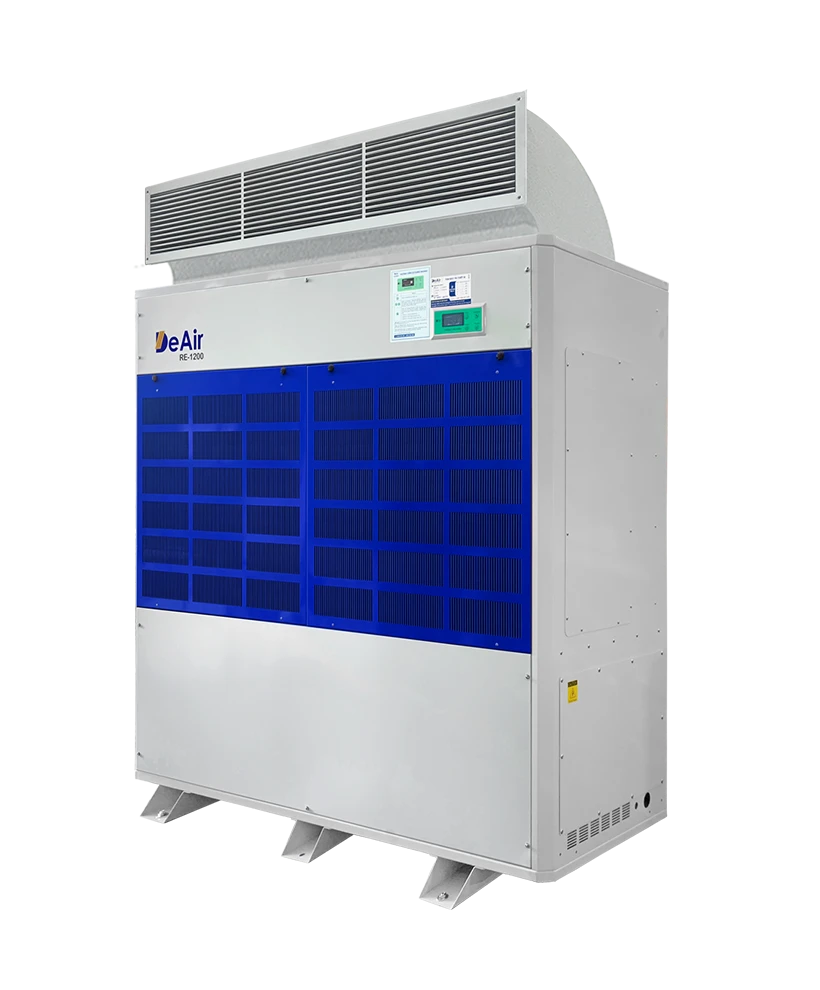 DeAir.RE
DeAir.RE -
Heat-Pump Dryer DeAir.RE-H
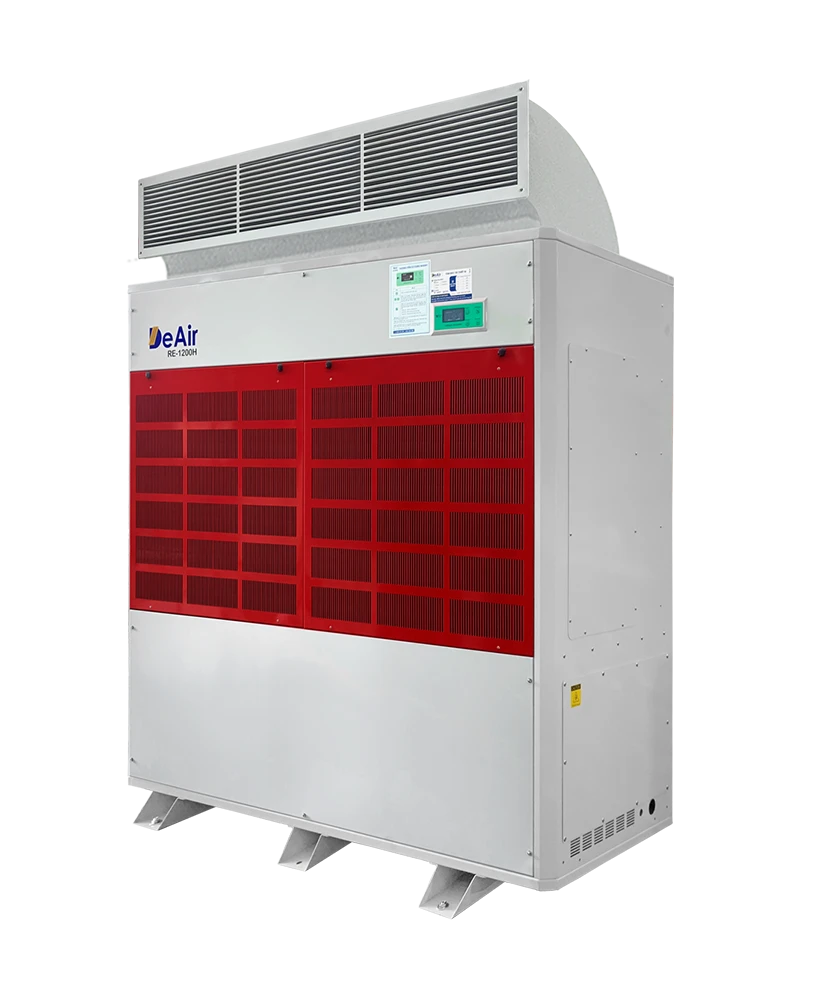 DeAir.RE-H
DeAir.RE-H -
Heat-Pump Stainless Steel Dehumidifier
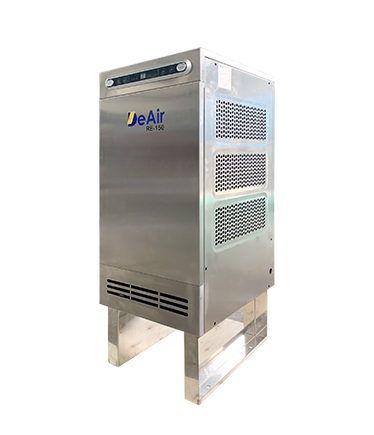 DeAir.RE-INOX
DeAir.RE-INOX -
Heat-Pump Isothermal Dehumidifier DeAir.CRE
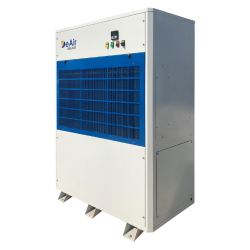 DeAir.CRE
DeAir.CRE -
Dezenno Dehumidifier
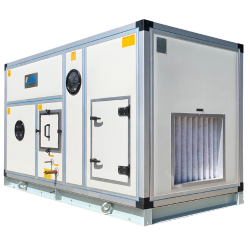 Dezenno
Dezenno -
Heat-Pump Ceiling Mounted Dehumidifier DeAir
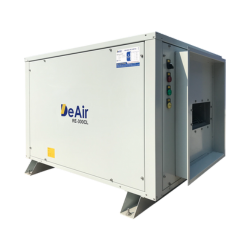 DeAir.RE-CL
DeAir.RE-CL -
Dehumidifier Olmas
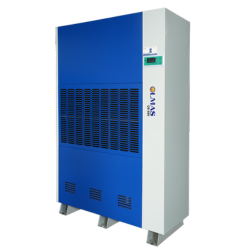 Olmas-OS
Olmas-OS -
Industrial Humidifier DeAir
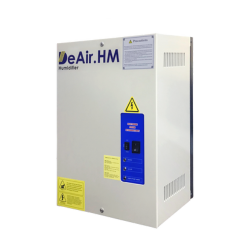 DeAir.HM
DeAir.HM -
Heat-Pump Dryer Daxwell
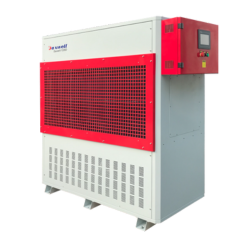 Daxwell
Daxwell -
Electric Duct Heater DeAir
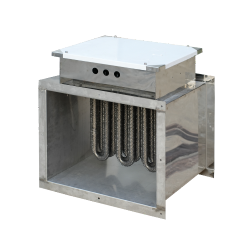 DeAir.Heat
DeAir.Heat -
Air Handling Unit Dezenno.MAX
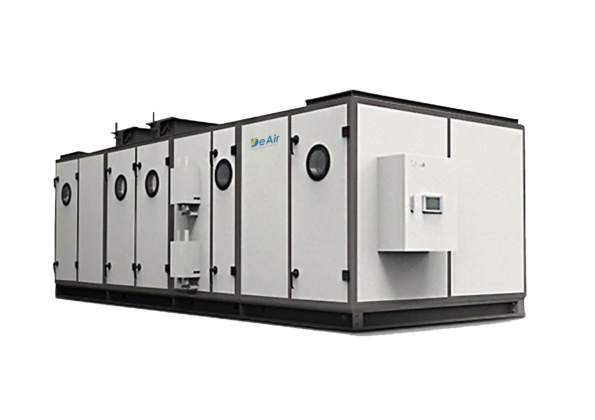 AHU
AHU
-
- Services
- Projects
- Warranty – Maintenance
- News
- Contact
In-Depth Comparison: Condensing vs. Desiccant Rotor Industrial Dehumidifiers
01/10/2025
Table of Contents
- 1. Operating Principles: Two Completely Different Approaches
- 2. Infographic: When to Choose Which Technology?
- 3. Head-to-Head: A Detailed Look at Pros and Cons
- 4. Effective Operating Range: The Decisive Factor
- 5. Practical Application Recommendations from DeAir Experts
- 6. Frequently Asked Questions (FAQ)
Choosing the right type of industrial dehumidifier is a critical technical decision that directly impacts production efficiency, product quality, and operating costs. Currently, the two most common technologies on the market are condensing and desiccant rotor dehumidification. Each technology has a completely different operating mechanism and application range.
This article provides an in-depth comparison of the two technologies to help engineers and business owners make the most informed and optimal choice.
Operating Principles: Two Completely Different Approaches

The different operating principles determine the application range of the two technologies.
1. Condensing Dehumidifier
This technology operates on the principle of air cooling. A fan draws moist air from the room across a cold coil (evaporator). Here, the air is rapidly cooled below its dew point, causing the water vapor in the air to condense into liquid, which is then drained away. The cool, dry air then passes over a hot coil (condenser), where it is reheated before being released back into the environment. Notably, DeAir's condensing dehumidifier lines, such as the DeAir.RE series, are equipped with advanced Heat Pump technology, which reuses heat to increase efficiency and provide superior energy savings. Additionally, DeAir also distributes the imported Olmas line, offering a cost-effective and reliable option.
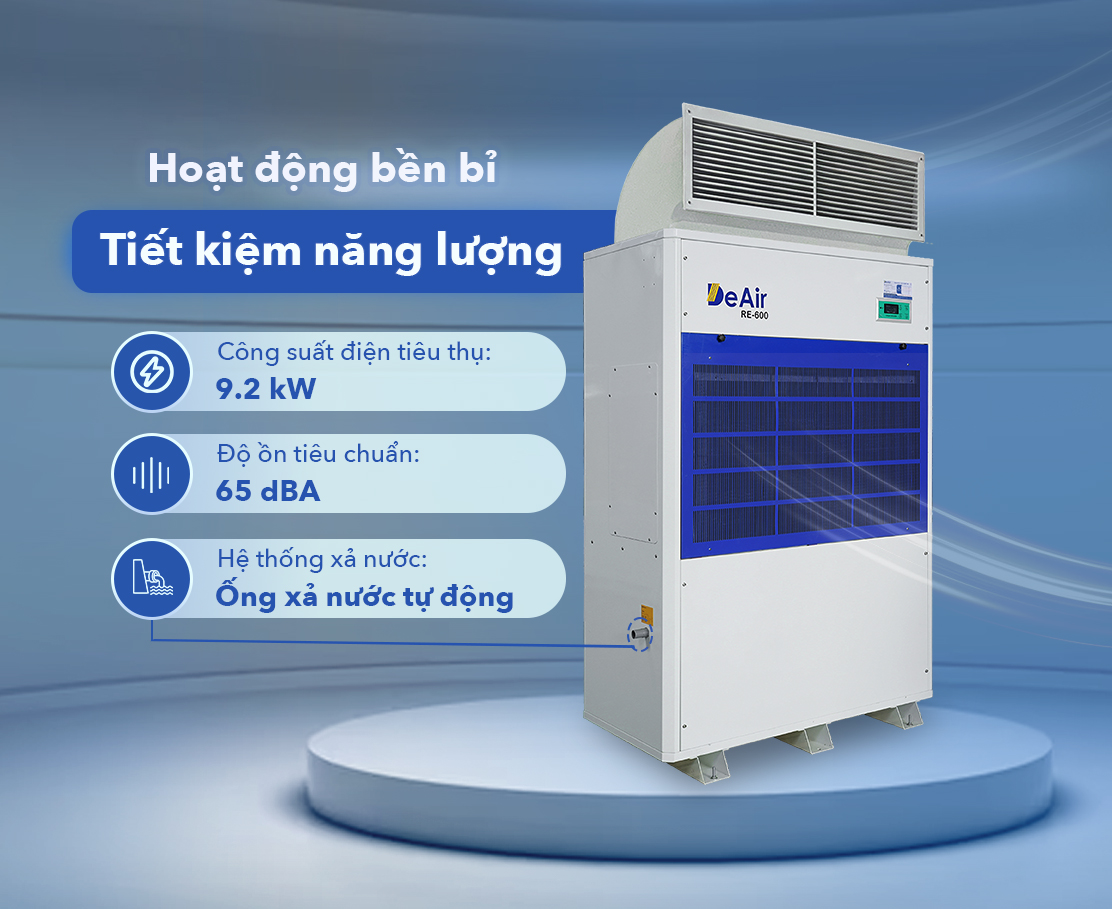
2. Desiccant Rotor Dehumidifier
This technology uses a special moisture-absorbing material, typically silica gel, formed into a slowly rotating honeycomb wheel (rotor). A stream of moist air (process air) is blown through one section of the wheel, where water vapor is captured in the desiccant's capillaries, and the dry air stream is returned to the room. Simultaneously, another airstream (reactivation air) is heated and blown through the remaining section of the wheel to "dry out" the desiccant material, expelling the moisture through an exhaust duct. Learn more about the science behind desiccant dehumidification technology at ScienceDirect.

.
Infographic: When to Choose Which Technology?
| Criteria | Condensing Dehumidifier | Desiccant Rotor Dehumidifier |
|---|---|---|
| Choose When | You need to control relative humidity (>45%RH) in an environment with temperatures above 15°C. | You need ultra-low humidity (<40%RH) or are operating in low temperatures (<10°C). |
| 🌡️ | ❄️ | |
| Common Applications | - General warehouses - Garment and woodworking factories - Basements, garages - High-temperature drying rooms |
- Cold and freezer storage - Pharmaceutical, lithium battery production - Laboratories - Plastics, electronics manufacturing |
Head-to-Head: A Detailed Look at Pros and Cons
| Criteria | Condensing Dehumidifier | Desiccant Rotor Dehumidifier |
|---|---|---|
| Efficiency at Temp >15°C | Excellent (High energy efficiency) | Good |
| Efficiency at Temp <10°C | Poor (Risk of coil freezing) | Excellent (Stable operation at sub-zero temperatures) |
| Ability to reach low humidity (<40%RH) | Limited | Excellent (Can reach below 5%RH) |
| Initial Investment Cost | Lower | Higher |
| Operating Cost | Lower in warm, humid conditions (especially with Heat Pump technology) | Higher (due to reactivation heater) |
| Maintenance | Simpler (similar to an air conditioner) | More complex (requires checking rotor, heater) |
Effective Operating Range: The Decisive Factor
The most significant difference, and the decisive factor in selection, lies in the effective operating range of the two technologies. Condensing dehumidifiers work most efficiently in environments with relatively high temperatures (above 15-20°C) and high humidity (above 50%RH). As the temperature drops, the machine's efficiency decreases rapidly, and ice can form on the cold coil, interrupting the dehumidification process.
In contrast, desiccant rotor dehumidifiers can operate effectively over a very wide temperature range, including sub-zero conditions. It is the only technology capable of stably lowering air humidity to very low levels (below 40%RH) without being affected by the ambient temperature.
Practical Application Recommendations from DeAir Experts
The choice of technology is not about which is "best" but which is "most suitable." Here are recommendations from DeAir's experts:
- Choose a Condensing Dehumidifier (such as the DeAir.RE or Olmas series) when:
- The operating environment is above 15°C, and the target humidity is between 45-65%RH.
- Applications include general warehouses, garment and wood processing factories, basements, and high-temperature drying rooms.
- Choose a Desiccant Rotor Dehumidifier (the Dezenno series) when:
- You require ultra-low humidity (<40%RH), such as in Lithium battery production (1%RH), pharmaceutical film coating rooms, or sensitive electronics manufacturing.
- The operating environment has low temperatures, such as in cold storage, freezer rooms, or cool food processing areas.
- Specialized processes like plastic drying, epoxy powder production, or spray painting are involved.
In summary, no single technology is perfect for every situation. The right choice depends entirely on a precise analysis of your business's temperature, humidity, and operational requirements.
Frequently Asked Questions (FAQ)
1. Does a desiccant rotor dehumidifier consume more electricity than a condensing one?
Yes, in terms of total power consumption, a desiccant rotor dehumidifier typically uses more electricity because it requires a heater to regenerate the desiccant material. However, for low-temperature applications or where ultra-low humidity is needed, it is the only effective technology, making the energy cost necessary and optimal for that specific problem.
2. Can I use a condensing dehumidifier in a cool storage room at 10°C?
While it might technically run, it is not recommended. At 10°C, the moisture removal efficiency of a condensing dehumidifier is very low, and the machine will have to run constantly with a high risk of ice forming on the coil, leading to inefficiency and wasted electricity. For this environment, a desiccant rotor dehumidifier is a much more suitable choice.
3. Which product lines does DeAir offer for each technology?
DeAir proudly provides solutions for both technologies. For condensing technology, we offer the DeAir.RE series (featuring energy-saving Heat Pump technology) and the Olmas line (an imported, cost-effective option). For specialized desiccant rotor technology for demanding applications, we offer the Dezenno series, manufactured to European standards.
NEED IN-DEPTH TECHNICAL CONSULTATION?
Every factory has its own unique thermal and humidity challenges. Let DeAir's experts help you select the most suitable and effective technological solution.
DEAIR JOINT STOCK COMPANY
Email: operation@deair.com.vn
Hotline: +84 925 977 579 (Ms. Tam) | +84 914 205 850 (Ms. Hoa)
Website: deair.com.vn
Sign up for news from DeAir
Related news






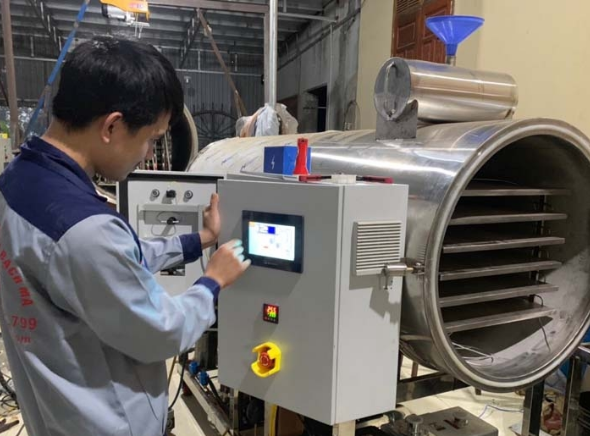



![[Case Study] DeAir Installs DeAir.De Rotor Humidity Control System for Pharmaceutical Plant in Binh Duong [Case Study] DeAir Installs DeAir.De Rotor Humidity Control System for Pharmaceutical Plant in Binh Duong](https://deair.com.vn/thumbs/news/2023_04/ban_giao_may_cho_duoc_bd/[270x153-cr]image1-1024x772.jpg__cv.webp)

![[Review & Guide] Olmas OS-300: The New Humidity Control "Warrior" for Medium to Large Warehouses [Review & Guide] Olmas OS-300: The New Humidity Control "Warrior" for Medium to Large Warehouses](https://deair.com.vn/thumbs/news/huong_dan_su_dung_may_olmas_21/[270x153-cr]vtm06440.png)